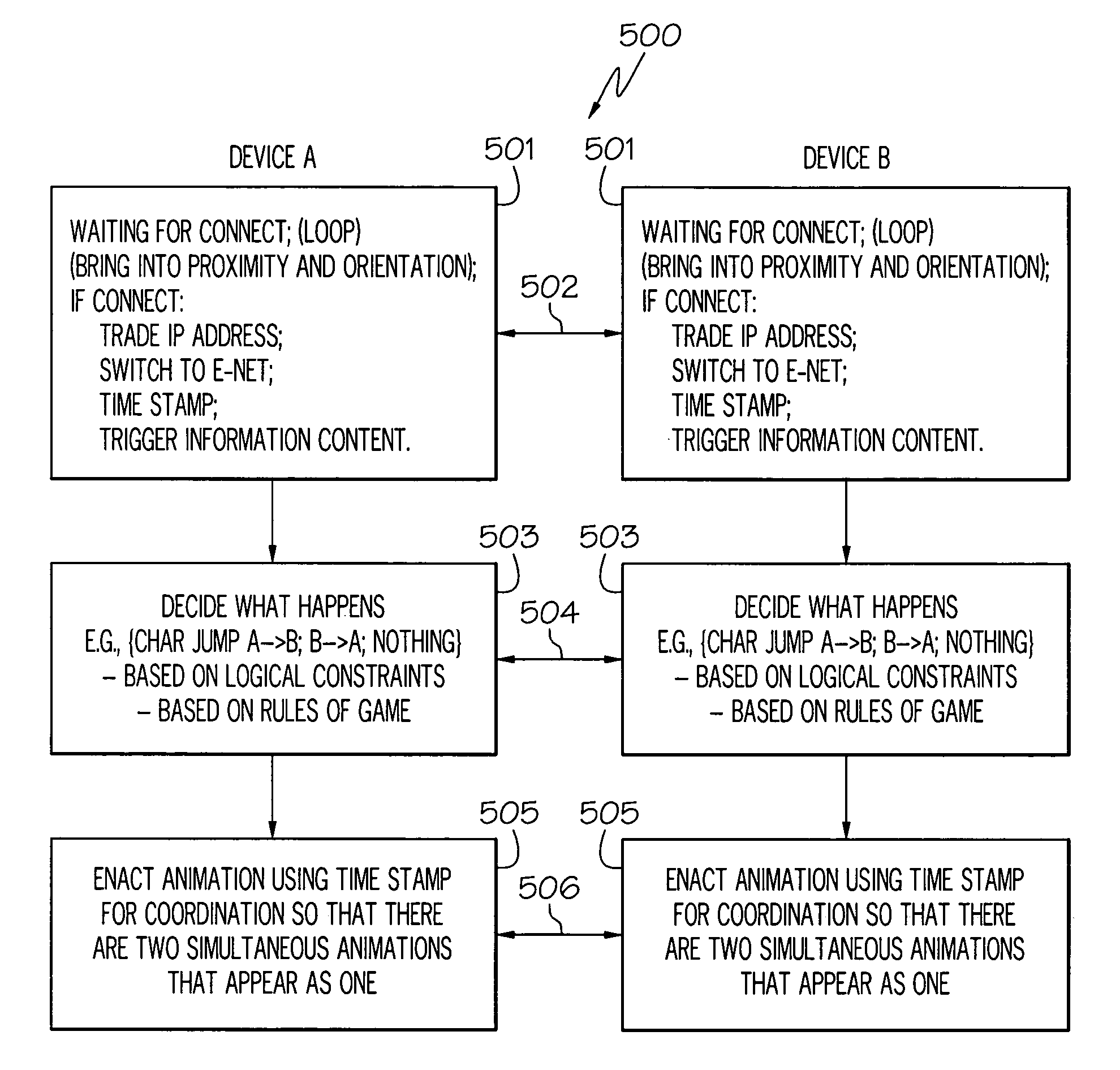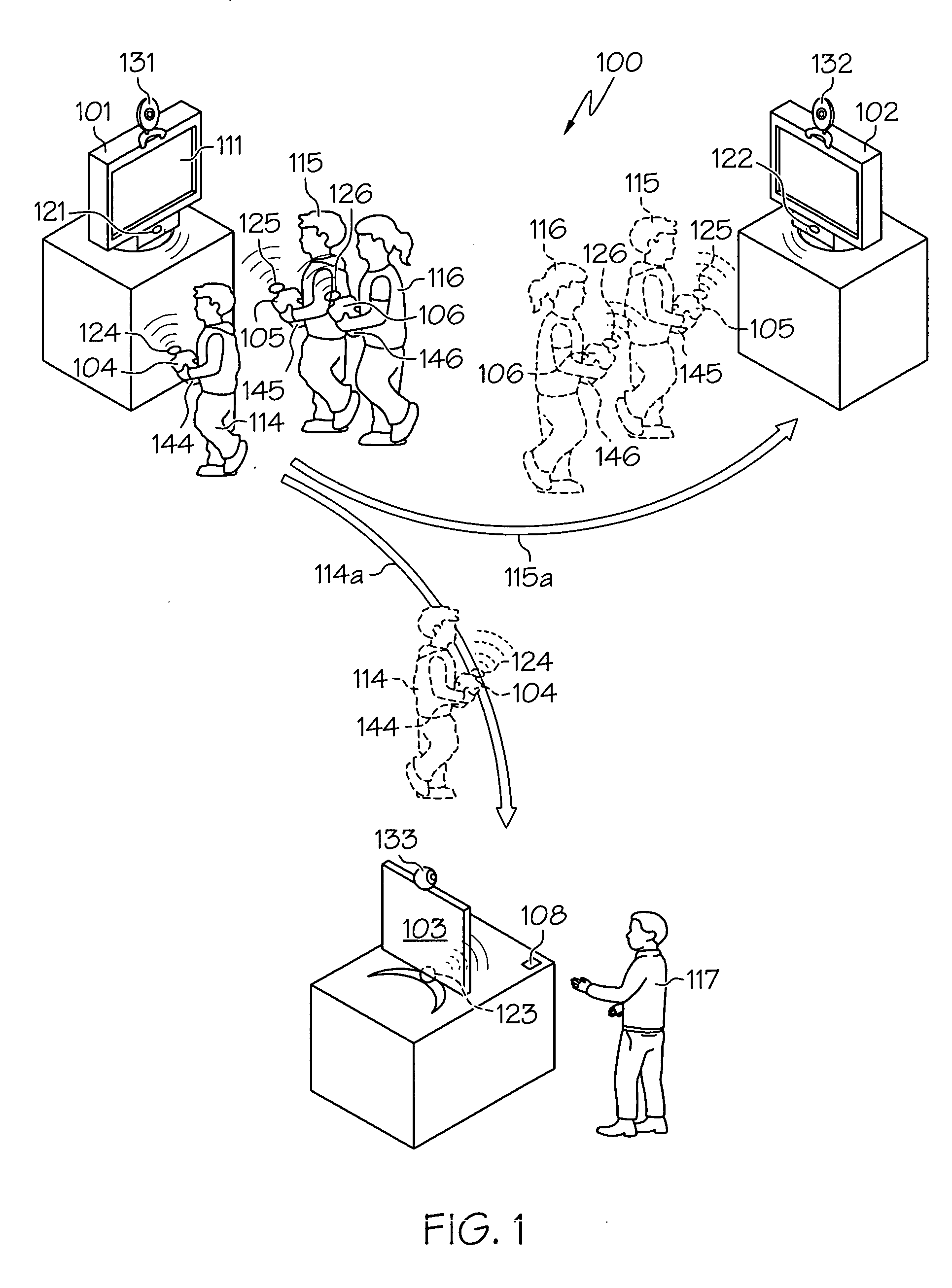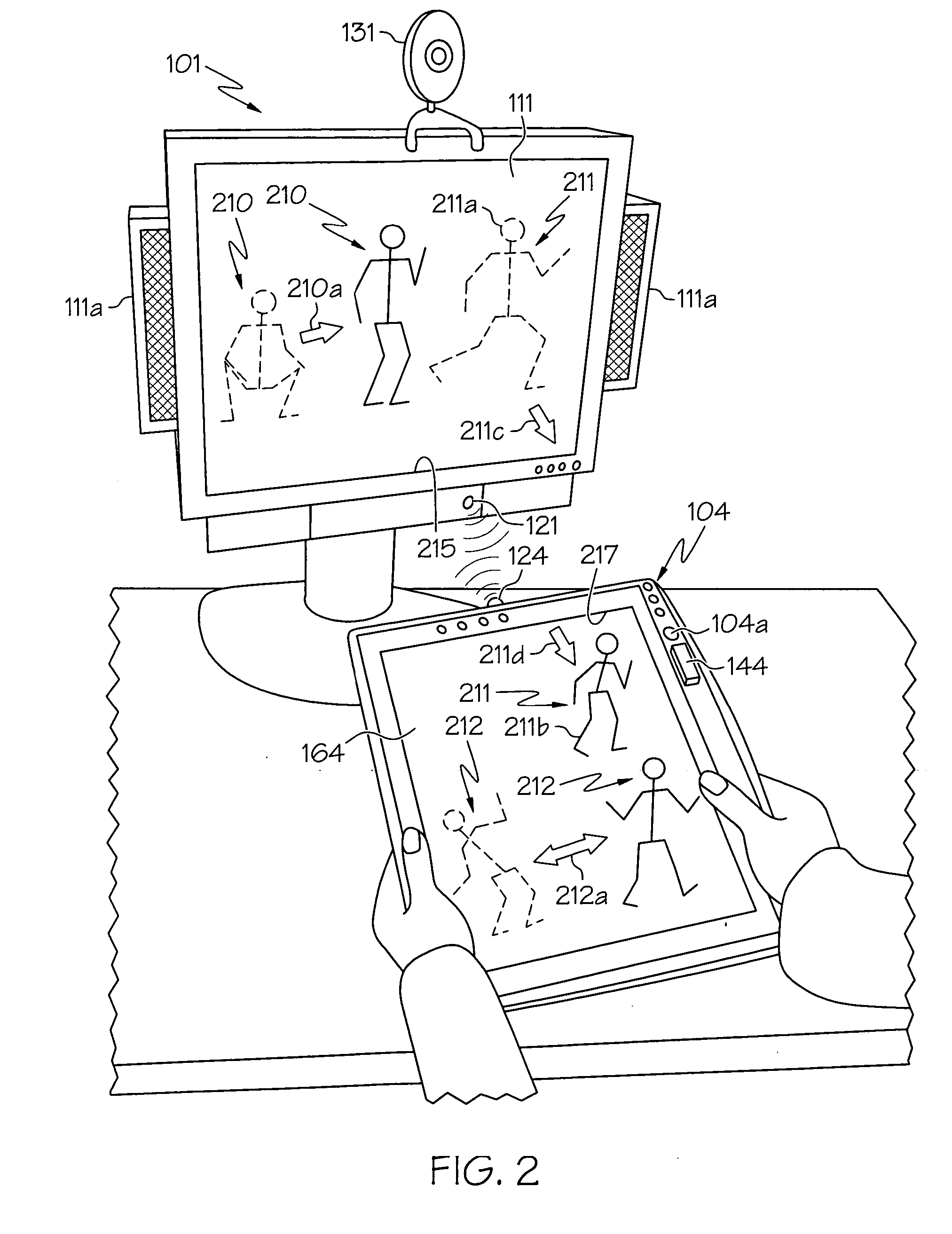Platform for seamless multi-device interactive digital content
a multi-device, interactive technology, applied in the field of multimedia information systems, can solve the problems of inability to facilitate a coherent experience across multiple devices, transfer data between devices, process could take a minute or more of time,
- Summary
- Abstract
- Description
- Claims
- Application Information
AI Technical Summary
Problems solved by technology
Method used
Image
Examples
Embodiment Construction
[0020] The following detailed description is of the best currently contemplated modes of carrying out the invention. The description is not to be taken in a limiting sense, but is made merely for the purpose of illustrating the general principles of the invention, since the scope of the invention is best defined by the appended claims.
[0021] Broadly, the present invention provides for transfer of interactive digital content—such as interactive graphics and sound—that operates seamlessly across multiple collocated computational devices, i.e., devices arranged within some pre-determined proximity to each and within some pre-determined range of relative orientations to each other. The invention involves apparatus and methods for transferring content among stationary and mobile devices, automatically triggering the transference of content among devices, and creating a coherent user experience (e.g., in which the multiple devices operate similarly enough to each other and with displays ...
PUM
 Login to View More
Login to View More Abstract
Description
Claims
Application Information
 Login to View More
Login to View More - R&D
- Intellectual Property
- Life Sciences
- Materials
- Tech Scout
- Unparalleled Data Quality
- Higher Quality Content
- 60% Fewer Hallucinations
Browse by: Latest US Patents, China's latest patents, Technical Efficacy Thesaurus, Application Domain, Technology Topic, Popular Technical Reports.
© 2025 PatSnap. All rights reserved.Legal|Privacy policy|Modern Slavery Act Transparency Statement|Sitemap|About US| Contact US: help@patsnap.com



